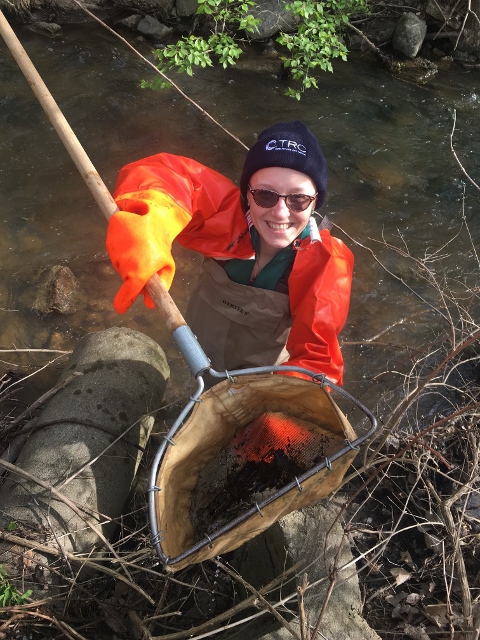Aquatic insect sampling on the Huron River and its creeks
Thanks to 145 volunteers who contributed approximately 580 volunteer hours, the October 2017 River Roundup was a great success! As always, HRWC 100% guarantees good weather for its volunteer events or your money back. As a result, this year we most certainly gave everyone their free registration money back, because the day was cold and very wet. Our volunteers came backed soaked with October rain, but in the tradition of ecologists everywhere, all were happy to simply have been outside.
It was a very full house here in the HRWC conference rooms before the 21 teams split up and traveled to 42 different creek and river locations across the Huron River Watershed to assess the aquatic benthic macroinvertebrate community. This study is one of the most effective ways that HRWC has to understand how the water quality of the river and creeks may be changing. From the data collected at this semi-annual event, we are able to keep abreast of the health of our waterways throughout the watershed. You can see a summary below, or detailed results in the October 14 River Roundup Report.
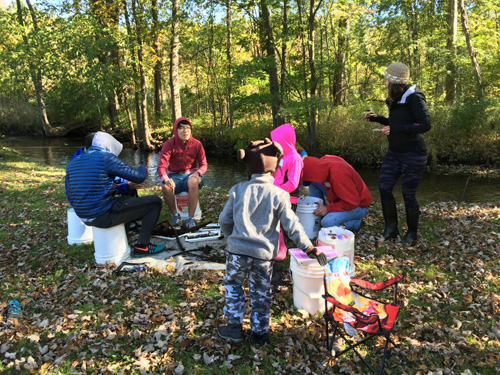
Current Watershed Health
Status
HRWC gives a rating to each site that we monitor (Excellent, Good, Fair, or Poor). The graph below shows this breakdown for the 61 locations that HRWC considers representative for the watershed. The detailed River Roundup report gives the site condition for each location.
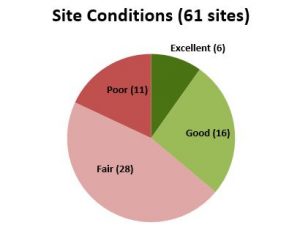
Trends
Overall, the health of the watershed as judged by our macroinvertebrate sampling is holding steady, though there are particular areas getting worse or better. Twenty-eight sites have had no statistically significant change over time, and 3 sites are too new to make this judgment.
Seventeen sites are declining in overall health including locations on Norton Creek, Traver Creek, Davis Creek, and Honey Creek (Washtenaw Co). Nine of the declining sites are in Livingston County, 4 are in Washtenaw, 2 are in Oakland, and 2 are in Wayne.
Thirteen sites are significantly improving. Ten of the improving sites are in Washtenaw County, including locations on Mill Creek, Malletts Creek, Fleming Creek, and the Huron River in Ypsilanti. Two sites are improving in Livingston County (Mann Creek at Van Amberg Road and Portage Creek at Unadilla Road), and 1 site is improving in Wayne County (Woods Creek at the Lower Huron Metropark).
Highlight
There were a lot of highly diverse samples of insects collected this season. The team at Horseshoe Creek: Merrill Road in Hamburg collected the most diverse sample seen there in many years. In the upper headwaters of the Huron, our volunteers once again found a very diverse insect population, including the rare Odontoceridae (strong case-maker caddis). In Malletts Creek, volunteers once again found a Philopotamid, a caddisfly, which is quite abundant in healthy streams but just recently popped up for the first time in this degraded-yet-improving urban creek.
The team at the Huron River: Zeeb Road collected the best sample ever taken at this site, which is saying something considering this was already the most biologically diverse location in the watershed. Twenty one insect families were found here, including 11 families from the mayfly-stonefly-caddisfly group that generally require clean water and high oxygen levels, and 5 sensitive families that are even more likely to be wiped out by the presence of pollution. (Note for people looking really close at the data report: This site is ranked #4 and and not #1 because of its large size. After controlling for size, there are three other sites that are considered more “healthy”.)
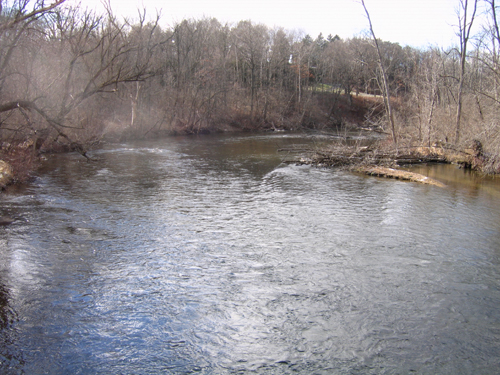
Lowlight
For some teams, sampling conditions were difficult. Many volunteers faced pouring rain during most of their collection time, and a few creeks were running fast and deep. Others reported that it was simply hard to see the insects, because the ambient light was so low from the combination of thick October rainclouds and dense trees. Despite this though, volunteers were able to find a high abundance of insects. At only one site (Mill Creek at Manchester), was the sample so sparse that I had to reject it for failing to meet our abundance benchmark (>40% less the median abundance at this site). The volunteers reported that the creek was flowing so fast that it was difficult to get the collector and net into the water.
Perhaps most disappointing result was the sample taken at Honey Creek: Wagner Road. For the second time in recent years, no sensitive insect families were collected at this site. The location was known to be slightly declining over time, however, this poor sample turned the slight decline into a statistically significant one. The upstream site at Honey Creek:Jackson Road has also been significantly declining for many years now, with the last sensitive insect found in 2009. As always, the loss of sensitive insects at Wagner Road could be a temporary blip in the data, but it is possible that the insects may not come back, similar to Jackson Road. HRWC has had a variety of projects on Honey Creek in recent years, and will continue to look into reasons why this is happening.
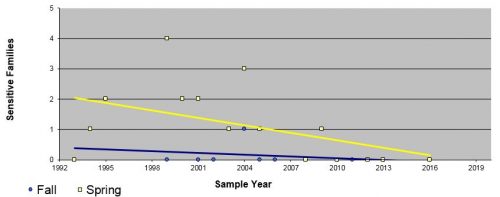
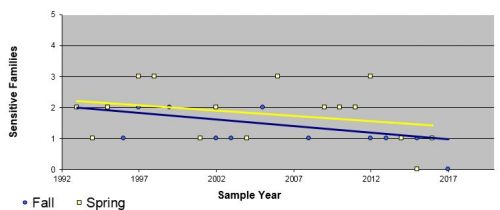
What’s next?
Want to learn more about the data that HRWC collected this past year? On January 24th at 6 pm at our office on 1100 N. Main Street, in Ann Arbor, HRWC staff will present results and interpretation for all of the field projects conducted within the past year. Good indoor weather guaranteed!
Are you a hearty Michigander who wears shorts in January and speedos while you swim Lake Michigan in March? If so, or if you are maybe 1-2 steps lower than that, you should join the tough souls who participate in the Winter Stonefly Search on January 20. It is like the River Roundup, only much snowier and usually colder, depending on what climate change is doing to us at the time. You can register for the event here.
